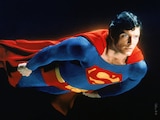Following his year-long multipart storyline pitting Superman and the Authority against Mongul for the fate of Warworld, Phillip Kennedy Johnson has brought the Man of Steel back home. Now with the Superman’s secret identity restored, he’s joined by friends and family alike to battle old foes returning in new ways…that’s a assuming they all survive “Knight Terrors,” of course.
Amid the signings, panels and nonstop hype of San Diego Comic-Con, we managed to steal a few moments with Johnson to get caught up on all things Action Comics, including what villains we may be seeing going forward, what’s going on with Lex Luthor and what he’s discovered about Superman over his three years of writing him.
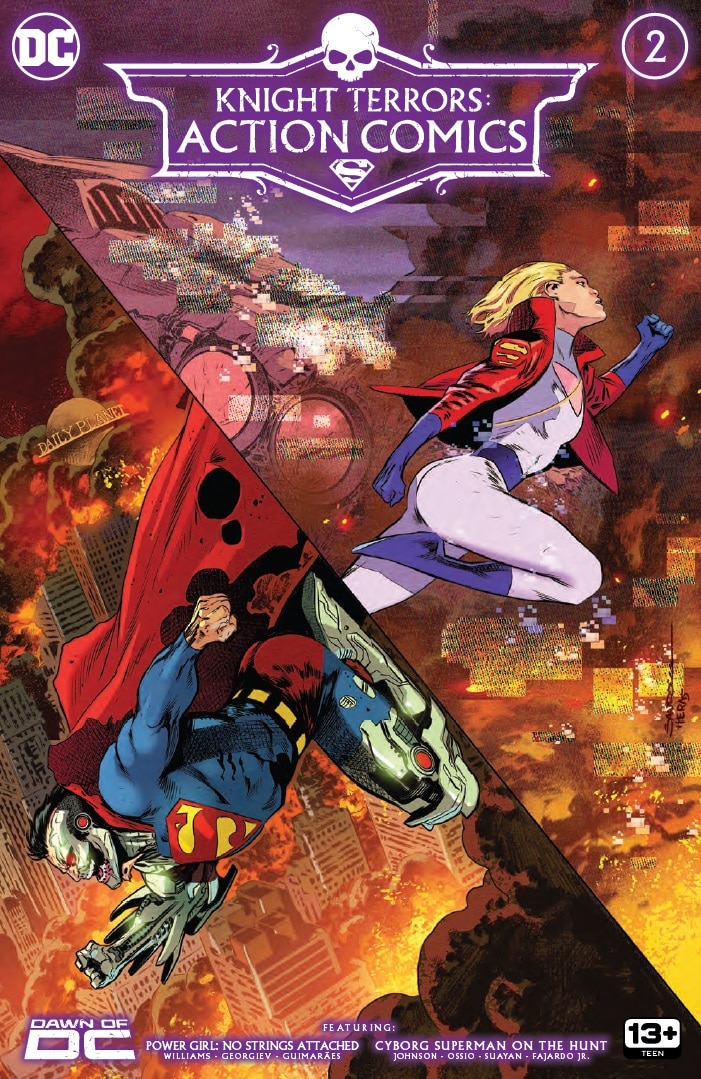
What drives you when you sit down to write the Man of Steel?
Phillp Kennedy Johnson: I was a musician before I was a comics writer, and one thing about my writing that I always go back to is something Thelonious Monk would say about his own improvisational solos. He said, “Revere the melody,” which meant that even when he was making an improvised solo on a theme, the theme is still always heard somewhere.
Whenever I write an established character like Superman, I always think back to the theme: “Champion of the Oppressed.” I see it on the screen when I’m watching the old Christopher Reeve films, I see it on the page in Grant Morrison’s All-Star Superman, key moments of Kingdom Come and other moments from my favorite comic books throughout history. It’s that he is a supremely powerful person who uses that power exclusively to help others. It’s ultimate power wielded with ultimate compassion, humility and selflessness. The reason the powers are there are to show how incorruptible he is.
An example would be in the recent Metallo story (Action Comics #1051-#1054), where Metallo’s the most powered up ever. We see Superman level up to take him down, but afterwards he puts him back together and pledges to help him get his sister back. He defeats the threat, then he chooses to help someone. We’re going to see more of that in the next arc as well, what happens after Superman puts away the bad guys.
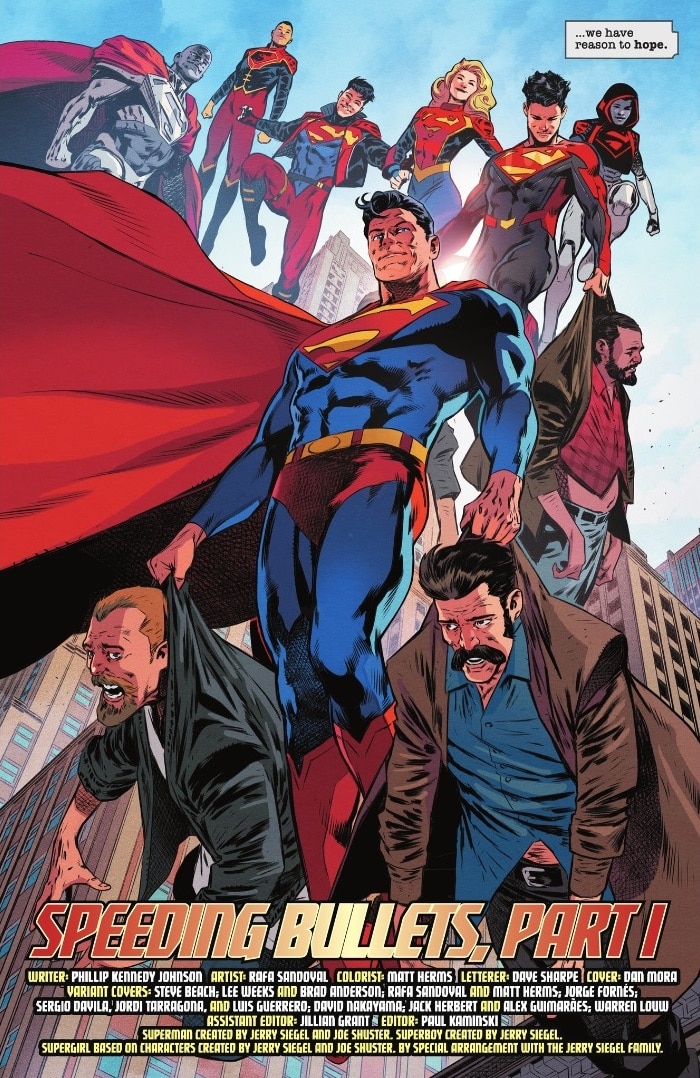
You referenced Kingdom Come earlier, and I’m not the only one who noticed a visual callback to that story in Action Comics #1051, when the Super-Family show up. Originally the image only featured Superman, but in this homage, we see Jon Kent, Supergirl, Steel, Kenan Kong, Superboy, the Super-Twins (Otho and Osu-Ra) and Natasha Irons. The family has now become really expanded. Is it a challenge to have this Clark Kent-focused story, while including these characters as well? Has this become a team book?
PKJ: It is a challenge. The intended goal was to have the inclusion of these characters be a reward to fans who’ve missed them. Superman has been on his own for a long time now. Yes, he’s had Lois and Jon, but he’s been without his supporting cast for much of the Warworld Saga.
With that scene you mentioned, I wanted to reward longtime fans, and also show the new characters (the Super-Twins) interact with Jon and Kara. Kara, for instance, is the old veteran of the House of El. She remembers Krypton and has the longest history with her home planet. Conner represents the soul of the books from the ’90s and is such a cool character for everyone to bounce off of. Steel and Natasha represent the new generation and new era for Metropolis. Everyone has a real role to play.
We’re not going to see the entire cast for the foreseeable future, but everyone’s back on the table. It’s like the old Superman Family books, the 80-page giants from back in the old days. It’s a celebration of the old books done in a new way. We’ll see all of them in some capacity. With their opening appearance all together, I wanted to distinguish them for new readers so they could tell them apart aside from their different character designs.
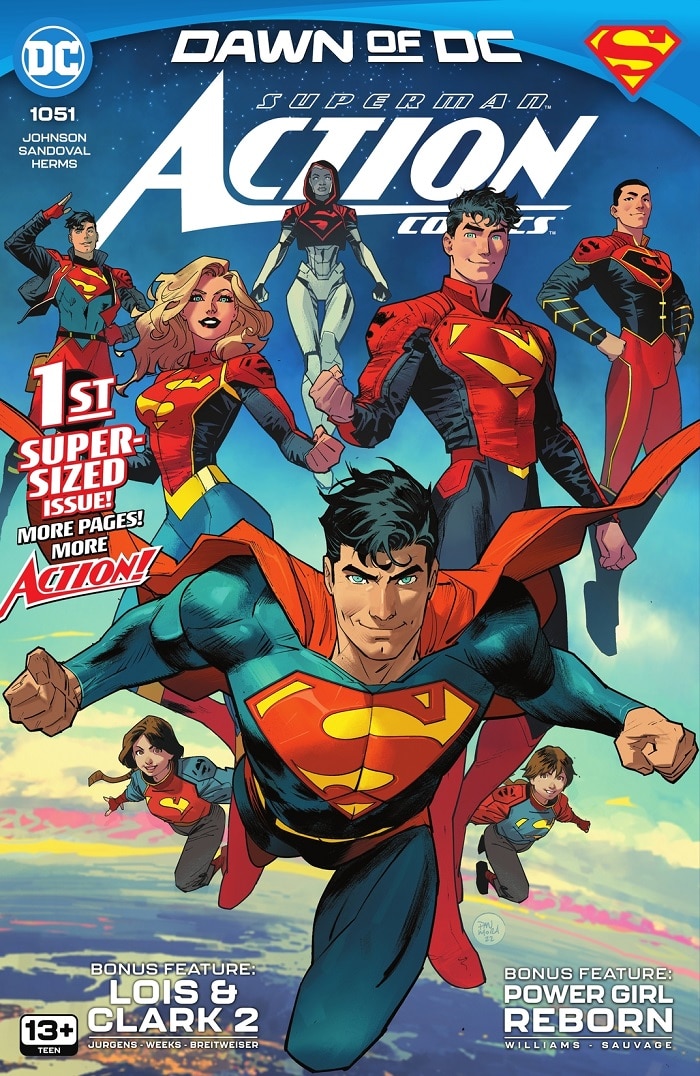
Speaking of designs, the Dan Mora cover on Action Comics #1051 features a more uniform look with the Super-Family sporting team jackets. What was the idea behind that?
PKJ: It was a statement that the Super-Family is all unified and working toward a common goal. Superman and Steel keep the cape, but everyone works as a team instead of solely as individuals. It’s also part of our plans for Metropolis, a true city of tomorrow, and wanting it to be as distinct as Gotham is.
It’s an interesting point you brought up earlier concerning the purpose of Superman’s powers in stories being a measuring stick for how incorruptible he is. In Warworld, Superman is powerless under an engine powering Warworld, but refuses to destroy it as it would mean the death of the planet and thousands of people. How did you approach making sure his moral center in that story was kept in check without his powers?
PKJ: That’s another example of sticking to a theme. I wanted to show what makes Superman real. It’s not the powers, it’s who he is. Even if he weren’t Kryptonian, he would still be Superman. I wanted to see him with an opportunity to regain his powers, but at the cost of his ethics. Anyone can be a hero when things are easy, but now we’re being tested. The rules, to him, are more important than his powers.
So far in this current run we’ve had Metallo and Cyborg Superman, who’s also the subject of your “Knight Terrors” story. Do you have a favorite Superman rogue?
PKJ: There is someone I’m going to use in the next arc that I love from the DC Universe. For fans who’ve been reading my work since the very beginning, they’re about to get a big payoff. I can’t spoil what it is, but it’s gonna be dope.
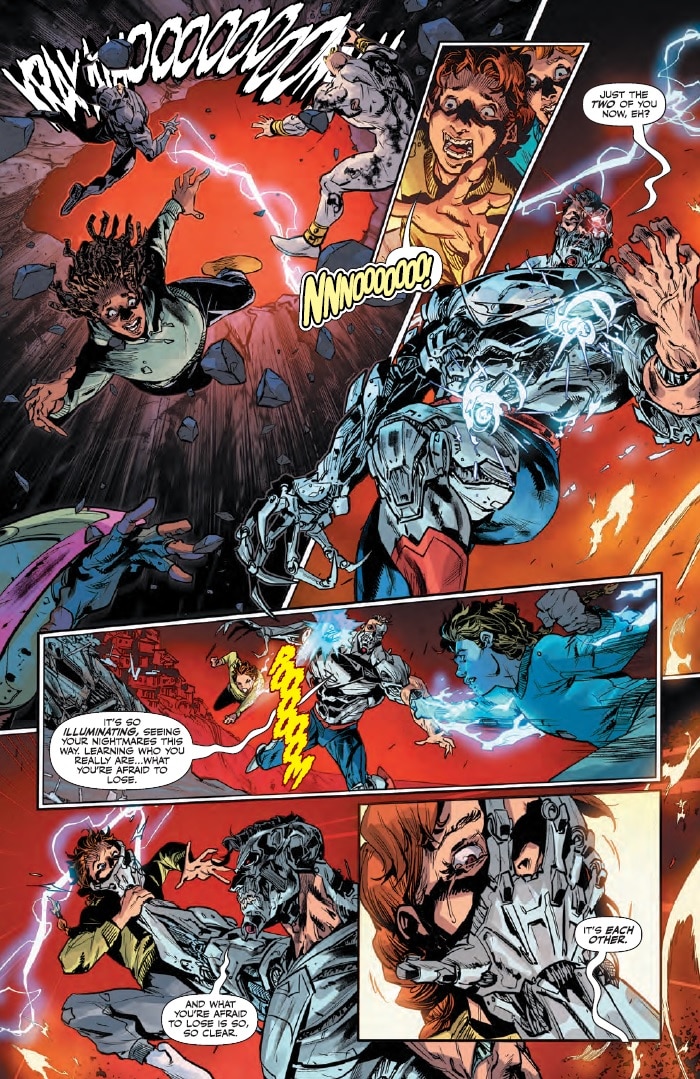
Well, we have to mention Luthor. He’s in prison and he may be up to some shady things, although he was innocent of Metallo’s plot. Will Luthor figure into your larger storyline?
PKJ: When Joshua [Williamson] came onto Superman, we talked a lot about our ideas. Even though there are shared characters between us, because we both want to make this an overarching series, Luthor’s very much in the foreground of Joshua’s run. I didn’t want to step on him in our book. Luthor is definitely a part of my plans, but for now, Luthor’s mostly in the shadows in my run.
What did you make of the decision to bring back Superman’s secret identity, but also have Luthor still aware of it?
PKJ: It was a collective decision between [the Superman writers]. We talked about things we wanted to do, and it made the most sense for Luthor to be responsible for the secret returning. It also meant discarding Manchester Black, which was tough, but the right decision.
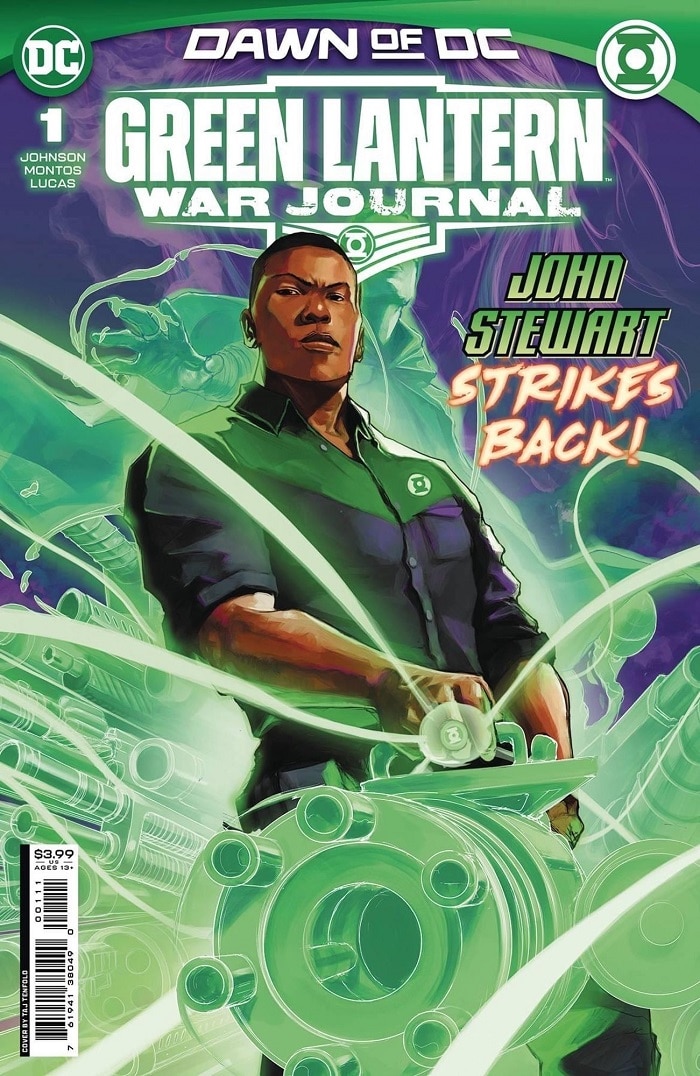
Before we wrap up, what can you tell us about your upcoming series, Green Lantern: War Journal?
PKJ: Green Lantern: War Journal is me being given the keys to the John Stewart character, whom I’ve loved for forever.
There are a lot of Green Lanterns who often seem like unlikely choices, but the ring sees something deeper within them. But John Stewart was never that way. He was always an obvious Green Lantern. What sold me on the character was reading his first appearance, where he became Green Lantern, but took his mask off: “Why would I hide my face?” It ties into his own history, with the inspiration he gets from his mother being a Civil Rights leader, not hiding one’s face while doing the right thing. I’m literally getting chills thinking of it. I could not admire him more.
So, this book will tie together all of the disparate elements to John. The marine, the architect, the son, the brother, the person who lost his wife and returns home to help take care of his family—and the person that [previous John Stewart writer] Geoffrey Thorne told me about. He told me that in his view, John never set out to be a hero forever. That was fascinating to me. We think of Superman being Superman for eternity. But Geoffrey Thorne saw John Stewart differently, and I really want to explore that with a hero like him.
Knight Terrors: Action Comics #1 and #2 by Phillip Kennedy Johnson, Leah Williams, Mico Suayan, Fico Ossio, Vasco Georgiev, Romulo Fajardo Jr. and Alex Guimarães are now available in print and as digital comics.
Green Lantern: War Journal #1 by Phillip Kennedy Johnson and Montos arrives in stores on September 19, 2023.

